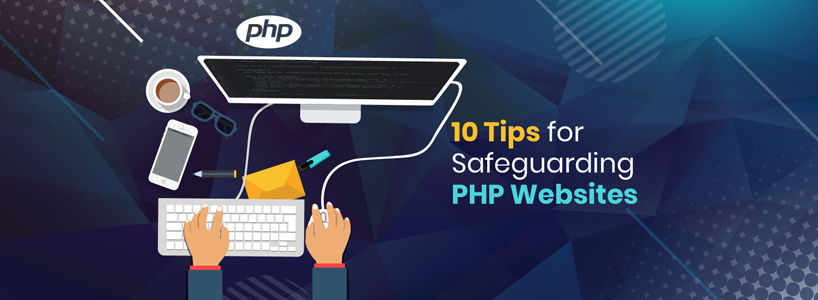Technological advancements upscale frequently. Some or the other day, technical advancement cease no chance to awestruck the mankind. Though such advancements have made our lives easier by becoming an inextricable part, they have their cons as well. Since a lot of CMSs are used for sharing information on the public platform, they become soft targets for cyber criminals. Hacking and phishing are common problems that website owners face frequently. Today, most of the people remain unaware of foreign invasion in their website records.
Unless there's a properly formulated defense module against cybercrime, you cannot remain offensive towards it. It takes an HTML coding for conceiving a website and JavaScript knowledge to make it attractive. Even adding some plug-ins can boost the functioning of the website but, they do not guarantee protection from cybercrimes. Joomla, WordPress, Drupal etc., are created using PHP scripting. Every PHP development company worldwide uses some security solutions that boost the security by making the website hack-proof.
SQL Injection Invasion
SQL injection attacks are most common in PHP scripting as a single query can compromise the entire application. Since most websites aren't able to defend themselves, the sole mechanism to tackle is by manipulating the login data of a user.
Cross-Site Request Forgery
CSRF is a cyber attack on websites. When a website comes under such an attack, the end-user can access and perform deplorable actions without any authentication. Since requests cannot be read under CSRF attack, its state can be changed by sending an altered link in the HTML tag. Fraudulent activities like online scamming and fund transfers are done through CSRF.
Regular Updates
This might sound vague to many. But, instead of adding additional plug-ins, it is better to update the PHP software. If the PHP software is not updated, it will become the gateway to cyber threats, especially hacking, in no time. Hence, many I.T firms offering PHP development services lay strong emphasize on software updates. This practice is mandatory for all those who have a self-hosting solution.
The .PHP Extension
How does it feel to write only the first name? It feels incomplete. Similarly, while saving a code file in PHP requires an appropriate address. Hence, adding .PHP extension is a must. With this extension, no one can access the website. Thus, it is essential to add the .PHP extension to every file.
Protection from Session Hijacking
Session hijacking is a cyber-attack when the hacker gains access to the user's ID. The invasion then sends report to the server from where $_Session validates the storage for granting access. But this problem has a solution too. By adding the code $IP=getenv (remote_addr) ; you can bind the IP address for preventing session hijacking.
Uploading Files Safely
Uploading files isn't a hassle. But it can become at any time. XSS attacks make all files vulnerable to cyber attacks. Without acquiring authentication, the end-user can access it for deplorable acts. Ahead, a solution to this problem is discussed. POST request form should be used for validating the specific command in the tag. Even developers can craft their own ultra-secure rules for file validation.


1 thoughts on "10 Tips for Safeguarding PHP Websites"
quickinnovations
18 June, 2020 at 9:32 am
Really great tips related to web designing and development projects. These all factors matters a lot. Thanks for sharing
Cancel
Reply